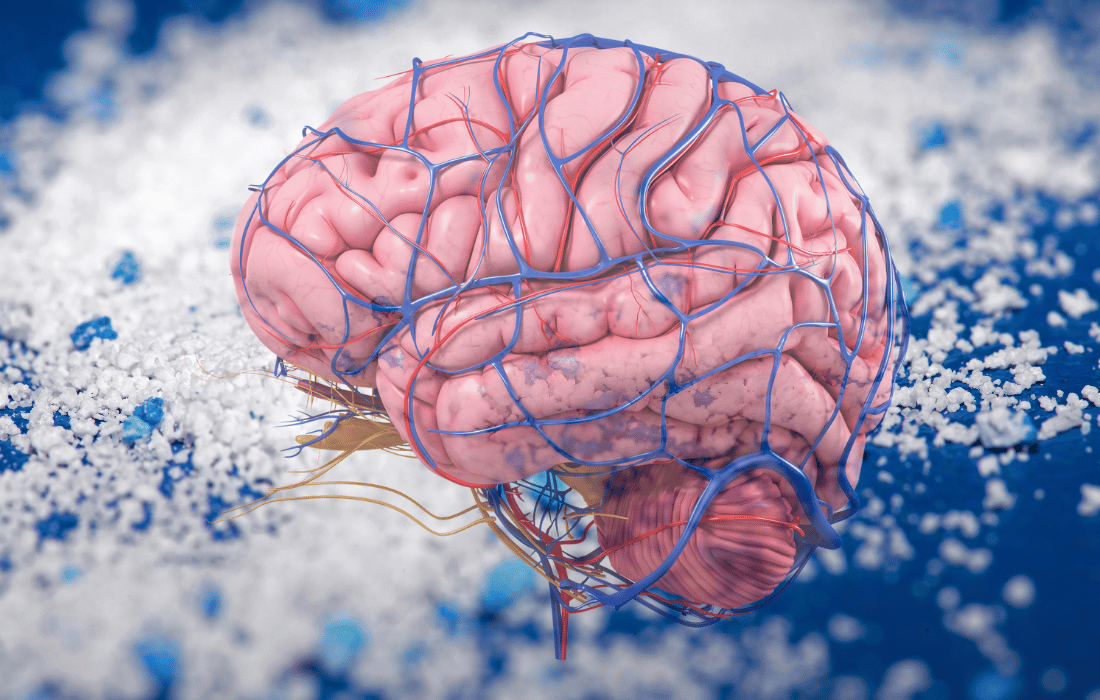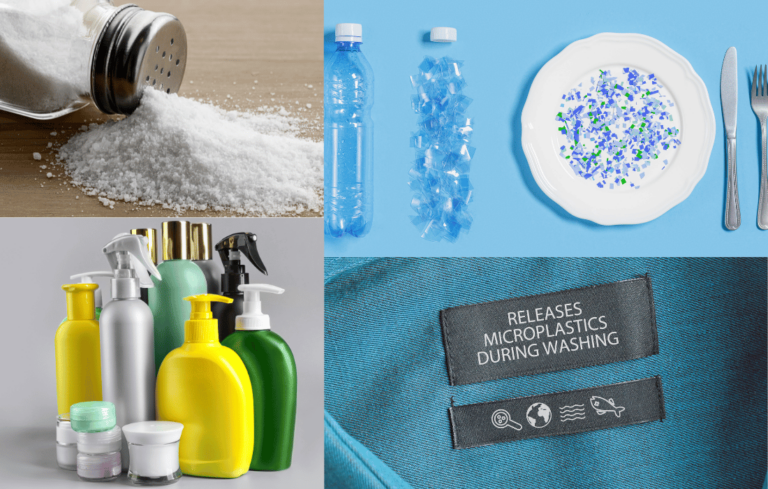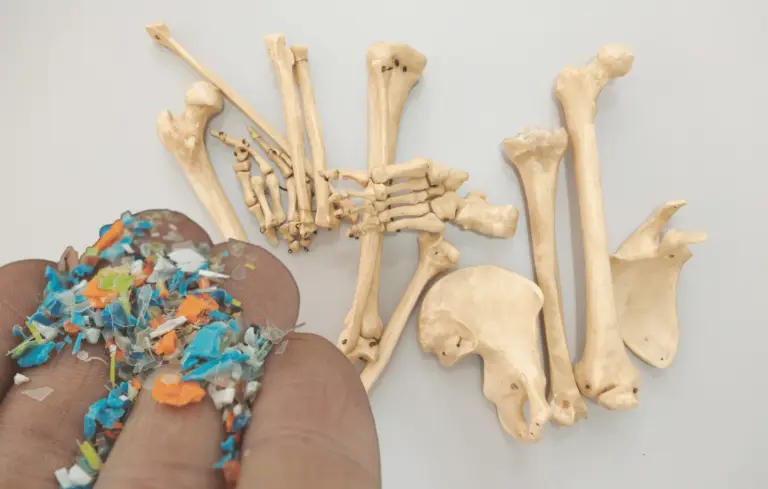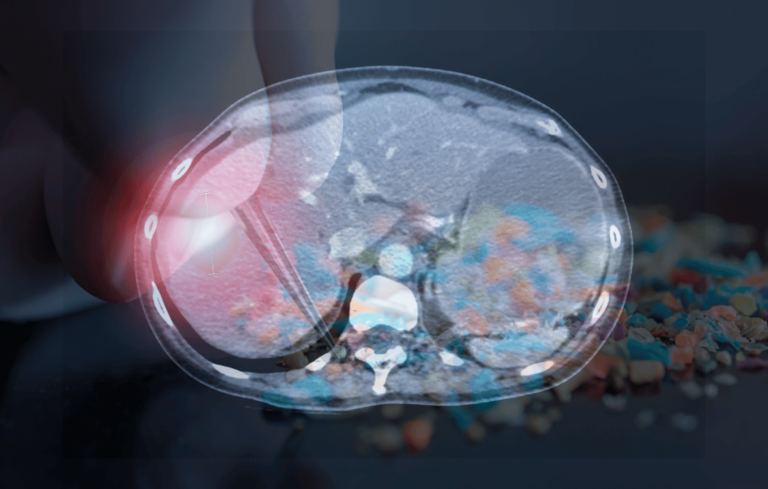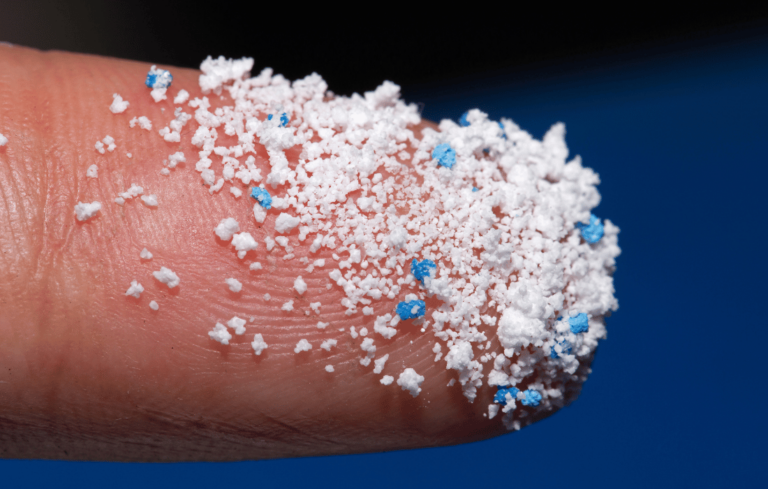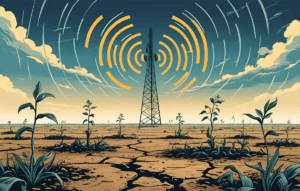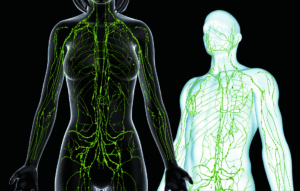Microplastics have infiltrated nearly every corner of the environment—and our bodies. From the air we breathe to the food we eat and the water we drink, these tiny plastic particles have become unavoidable. Over the past year, research has revealed just how deeply microplastics have embedded themselves into human biology, with evidence showing their presence in the gut, bone marrow, testicles, placenta, and even vital organs where they cause lesions. However, one of the most alarming discoveries to date is their accumulation in the brain, an organ once believed to be protected by the blood-brain barrier (BBB).
Recent studies have not only confirmed that microplastics can cross the BBB but also suggest that their presence in the brain may contribute to neurodegenerative diseases, cognitive decline, and inflammation. This article leaves no stone unturned in examining the impact of microplastics on the human brain, how they get there, and what it means for our health.
Microplastics Recap: What We Know So Far
Before diving into the specific ways microplastics affect the brain, it’s crucial to understand the broader scope of microplastic exposure, their presence in the human body, and their overall impact on health. Microplastics are everywhere—pervasive in our environment, in our daily lives, and, as research is now confirming, inside us.
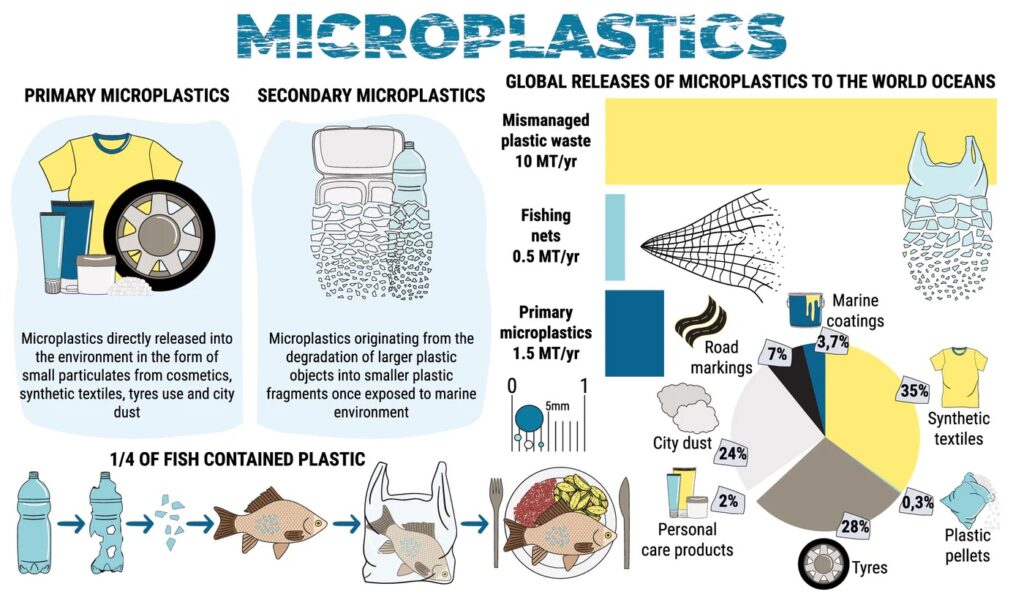
1. Top Ways We Are Exposed to Microplastics
The average person unknowingly consumes or inhales an alarming number of microplastics every single day. A 2019 study estimated that we ingest between 39,000 and 52,000 microplastic particles annually, with even higher exposure when inhalation is factored in. But where is all this plastic coming from?
- Drinking Water: Microplastics have been detected in tap water, bottled water, and even well water. Studies have shown that bottled water contains twice as many microplastics as tap water, with polyethylene terephthalate (PET) and polypropylene (PP) being the most common contaminants.
- Food Contamination: Microplastics make their way into our diet through seafood, produce, and processed foods. Fish and shellfish often contain plastic particles due to ocean pollution, and plastic packaging can also leach microplastics into food.
- Airborne Microplastics: Every breath we take likely contains microplastics from synthetic fibers in carpets, clothing, and industrial pollution. Urban environments, in particular, have high concentrations of airborne plastics, which can settle into our lungs and eventually enter the bloodstream.
- Household Dust and Synthetic Fabrics: Microplastics shed from clothing, upholstery, and even household dust. Washing synthetic textiles like polyester or nylon releases millions of microfibers into water systems, which are not effectively filtered out by wastewater treatment plants.
- Personal Care Products: Many exfoliating scrubs, toothpaste, and cosmetics historically contained microbeads—tiny plastic particles that are now banned in some countries but persist in certain formulations and in older products.
With microplastics being nearly impossible to avoid in modern life, it’s no surprise that they are making their way into the human body and causing concern for our long-term health.
2. Where Microplastics Have Been Found in the Human Body & How They Get There
The discovery of microplastics in human tissues was once shocking but is now becoming disturbingly routine. Studies have detected microplastics in almost every major organ system, revealing the ability of these particles to bypass our body’s natural defenses and infiltrate areas where they were never meant to be.
- Bloodstream: Several studies have found microplastics in human blood for the first time, proving that these particles circulate throughout the body and can lodge themselves in vital organs.
- Gut & Digestive System: Since ingestion is a primary route of exposure, the digestive tract is one of the most contaminated areas. Microplastics in the gut can alter the microbiome, leading to dysbiosis, inflammation, and potentially contributing to gastrointestinal diseases like Crohn’s or IBS.
- Liver & Kidneys: The body’s filtration systems, including the liver and kidneys, are also accumulating microplastics, which may interfere with detoxification processes and contribute to organ damage.
- Bone Marrow: Research identified microplastics within human bone marrow, a concerning revelation given the role of bone marrow in immune function and blood cell production.
- Placenta & Reproductive Organs: Microplastics have been detected in the placenta of pregnant women, raising concerns about fetal exposure. Additionally, studies have found microplastics in testicular tissue, with potential implications for declining sperm quality and male fertility.
- Lungs & Respiratory System: Inhaled microplastics have been observed in lung tissue, even in individuals who did not work in industrial environments, confirming that everyday exposure is a growing threat to respiratory health.
Now, with evidence showing that microplastics can cross the blood-brain barrier (BBB) and accumulate in the brain, we must consider the potentially devastating effects on cognitive function and neurological health.
3. Other Ways Microplastics Impact Our Health
While much of the focus has been on their presence in the brain and endocrine system, microplastics are suspected of playing a role in numerous other health conditions, including metabolic disorders, immune system dysfunction, and cardiovascular disease.
- Endocrine Disruption: Many plastics contain endocrine-disrupting chemicals (EDCs) like bisphenol A (BPA) and phthalates, which interfere with hormone regulation. These chemicals are linked to reproductive issues, thyroid dysfunction, and increased cancer risk.
- Fertility and Reproductive Health: Studies have found microplastics in human testicular tissue, and emerging evidence suggests they may contribute to declining sperm quality and motility. This aligns with global trends showing plummeting sperm counts in men over the last several decades.
- Chronic Inflammation & Autoimmune Diseases: Because microplastics trigger oxidative stress and immune responses, they may contribute to autoimmune conditions like rheumatoid arthritis, lupus, and multiple sclerosis. Chronic inflammation is also a known driver of many modern diseases, from obesity to Alzheimer’s.
- Carcinogenic Potential: Certain microplastics, particularly those derived from polyvinyl chloride (PVC) and polystyrene (PS), contain known carcinogens. Long-term exposure may increase the risk of certain types of cancers.
- Cardiovascular Risks: A recent study found microplastics embedded in carotid artery plaques, raising concerns about their role in cardiovascular disease and increased risk of heart attacks and strokes.
- Disruptions to the Gut Microbiome: Since microplastics are found in the digestive system, they influence gut bacteria populations. Dysbiosis (an imbalance in gut bacteria) is linked to obesity, diabetes, and mental health disorders.
Given the growing body of evidence connecting microplastics to a wide range of health issues, the need for awareness and intervention has never been more urgent. The fact that these particles are now accumulating in the brain signals a potential public health crisis that we cannot afford to ignore.
The Blood-Brain Barrier: A Gate Under Siege
The blood-brain barrier is one of the body’s most important defense systems, acting as a highly selective membrane that prevents toxins, pathogens, and harmful substances from entering the brain. However, research now confirms that micro- and nanoplastics (MNPs) can cross this protective barrier, raising major concerns about their impact on neurological health.
A study analyzing cerebrospinal fluid (CSF) samples from 28 patients found that polyethylene (PE) and polyvinyl chloride (PVC) were the most common MNPs present in the human central nervous system (CNS). Researchers also observed that an impaired BBB was a significant factor in allowing these plastics to enter CSF, where they accumulated. While some plastics, such as polypropylene (PP) and PE, showed no direct correlation with inflammatory markers, their presence alone in the brain is cause for concern.
How Do Microplastics Enter the Brain?
The human body is exposed to microplastics through multiple routes, including ingestion (contaminated food and water), inhalation (airborne microplastics), and dermal contact. Once inside the body, these plastics travel through the bloodstream, where they can lodge themselves in vital organs—including the brain.
1. Leaky Blood-Brain Barrier (BBB)
A compromised BBB due to inflammation, infections, or chronic stress increases the likelihood of microplastics passing through into the CNS.
Studies on mice have shown that polystyrene nanoparticles (PS-NPs) can accumulate in the brain in a dose-dependent manner, leading to neuroinflammation and cognitive impairments.
2. Direct Transport via the Olfactory Nerve
Airborne microplastics can bypass the BBB altogether by traveling through the nasal cavity and directly entering the brain via the olfactory nerve.
This route of entry is particularly concerning given the increasing levels of airborne plastic pollution.
3. Gut-Brain Axis Disruption
The gut and brain are intricately connected through the vagus nerve, a key communication highway in the body.
Research proves that microplastics disrupt the gut microbiome, which in turn can lead to neuroinflammation and changes in brain function.
4. Nanoparticle Trojan Horse Mechanism
Microplastics can act as carriers for heavy metals and environmental toxins, which hitch a ride across the BBB.
This increases their ability to penetrate deep into brain tissue and trigger neurotoxic effects.
The Consequences of Microplastics in the Brain
Microplastics are not inert; once inside the brain, they can trigger a cascade of harmful effects. Here’s what we know so far:
1. Neuroinflammation and Oxidative Stress
Studies have demonstrated that microplastics can activate microglial cells, the brain’s immune system, leading to chronic inflammation and oxidative stress.
This inflammation has been linked to neurodegenerative diseases like Alzheimer’s and Parkinson’s.
A study found that PS-NPs interacted with α-synuclein fibrils in the brain, accelerating the formation of plaques associated with Parkinson’s disease.
2. Cognitive Impairment and Memory Decline
Animal studies show that exposure to microplastics leads to memory deficits, increased anxiety, and behavioral changes.
Mice exposed to microplastics in their drinking water performed significantly worse on spatial and fear-based memory tests.
3. Endocrine Disruption and Neurodevelopmental Issues
Many plastics contain endocrine-disrupting chemicals (EDCs) such as bisphenol A (BPA) and phthalates.
These chemicals interfere with hormonal signaling, which is crucial for brain development, mood regulation, and overall cognitive function.
Studies have raised concerns that prenatal exposure to microplastics could contribute to neurodevelopmental disorders such as ADHD and autism.
4. Sleep Disruption and Circadian Rhythm Disturbance
Microplastics have been linked to disturbances in sleep cycles by interfering with melatonin production.
Chronic exposure may contribute to increased rates of sleep disorders and insomnia.
Long-Term Public Health Implications
1. Rising Neurological Disease Rates
Neurodegenerative diseases such as Alzheimer’s, Parkinson’s, and dementia are on the rise globally. While aging populations and genetic predispositions are commonly cited factors, environmental contributors are often overlooked. The increasing levels of microplastics found in human tissues correspond alarmingly with the growing prevalence of these brain disorders. If microplastics are capable of triggering chronic neuroinflammation and oxidative stress—two known factors in neurodegeneration—then their role in accelerating these conditions demands urgent investigation.
Microplastics have also been linked to disruptions in neurotransmitter function, which could have widespread effects on mental health. Depression, anxiety, and other mood disorders have seen a dramatic increase in recent decades, and exposure to endocrine-disrupting chemicals (often present in plastics) may be a contributing factor. If microplastics continue to accumulate in the brain at the levels observed in recent studies, we may soon be facing an epidemic of cognitive and neurological disorders unlike anything we’ve seen before.
2. Potential Role in Accelerated Aging
Aging is a natural process, but certain environmental factors can accelerate it. One of the hallmarks of aging is an increase in oxidative stress and inflammation—both of which are directly linked to microplastic exposure in the brain. When microplastics infiltrate the central nervous system, they may trigger microglial activation, leading to chronic, low-grade neuroinflammation. This type of inflammation is known to contribute to age-related cognitive decline, memory loss, and an increased risk of diseases like Alzheimer’s.
Beyond neuroinflammation, microplastics may also contribute to mitochondrial dysfunction in brain cells. The mitochondria are responsible for producing energy at the cellular level, and their impairment is a key driver of aging. If microplastics interfere with mitochondrial function, they could accelerate neuronal degeneration, leading to early-onset cognitive impairment and potentially even an increased risk of stroke.
Moreover, endocrine-disrupting chemicals found in microplastics, such as BPA and phthalates, have been shown to interfere with hormone regulation. Since hormones play a crucial role in brain function, mood stability, and neuroplasticity, this disruption could have far-reaching effects on aging populations. In essence, microplastic exposure may not just affect brain health—it could actively speed up the aging process.
3. Widespread Societal Impact
If microplastics contribute to cognitive decline and neurological diseases, the societal consequences could be staggering. The healthcare system is already struggling to manage the rising prevalence of neurodegenerative diseases, and if microplastic exposure proves to be a significant contributing factor, it could lead to a surge in medical costs, increased caregiving burdens, and a loss of workforce productivity.
Cognitive decline is not just an issue for the elderly. Research has shown that exposure to microplastics can affect neurodevelopment in infants and children, potentially leading to learning disabilities, behavioral disorders, and a decline in IQ levels. If younger generations are being exposed to brain-altering microplastics from birth, we could be facing a future where widespread neurological impairment affects education, employment, and overall societal function.
How to Reduce Microplastic Exposure
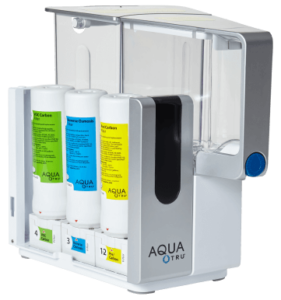 1. Improve Water Filtration
1. Improve Water Filtration
Tap water is a major source of microplastics, with studies detecting plastic particles in over 80% of global water samples. A high-quality filtration system like reverse osmosis with an activated carbon filter can remove these contaminants.
2. Choose Natural Materials
Synthetic fabrics like polyester, nylon, and acrylic shed thousands of plastic fibers per wash. Switch to organic cotton, wool, linen, and silk for clothing and bedding. For synthetic garments, use a microfiber-catching laundry bag or install a washing machine filter to capture plastic fibers before they enter waterways.
3. Prioritize Detoxification

Since microplastics accumulate in the body, supporting detox pathways is essential. Eat foods rich in antioxidants and detoxifying compounds, such as leafy greens, spirulina, turmeric, ginger, and chlorella. Engage in regular sweating activities—exercise, sauna, or steam baths—to eliminate toxins through the skin. Hydrate with filtered water to support the liver and kidneys in flushing out plastics.
4. Reduce Plastic Usage
Single-use plastics are a major contributor to microplastic pollution. Replace plastic water bottles, utensils, straws, and food containers with glass, stainless steel, or silicone alternatives. Avoid heating food in plastic, as heat accelerates plastic breakdown, releasing microplastic particles directly into your meals.
5. Use Probiotics for Microplastic Detoxification
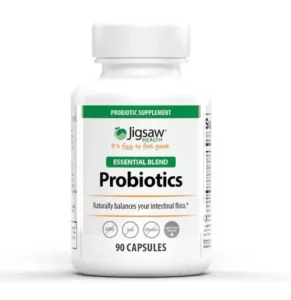
Recent research suggests certain probiotics can bind to microplastics in the gut, limiting their absorption. Research has shown that Lactobacillus plantarum, lactobacillus rhamnosus, lactobacillus acidophilus, bifidobacterium bifidum, and bifidobacterium longum were particularly effective. Jigsaw Health’s Essential Blend Probiotic contains all these strains, making it a powerful option for gut health and microplastic detoxification. Pair probiotics with prebiotic-rich foods like garlic, onions, and asparagus to further enhance microbiome resilience.
6. Improve Air Filtration
Microplastics are not just in water—they are airborne. Dust and indoor air pollution contain plastic particles, which can be inhaled and absorbed into the bloodstream. Use HEPA air purifiers to reduce airborne plastics in your home. Regularly dust and vacuum with a HEPA-filtered vacuum to prevent microplastic buildup in your living space. If possible, ventilate indoor spaces by opening windows and using air filters to minimize indoor plastic exposure.
Conclusion: A Call for Urgent Action
Microplastics are no longer just an environmental issue; they have become a serious threat to human health. Their ability to cross the blood-brain barrier and accumulate in the brain raises alarming concerns about their role in cognitive decline, neuroinflammation, and long-term neurological health.
While more research is needed to fully understand the implications, the existing data is clear: microplastics do not belong in our brains. Until we find a solution to the plastic crisis, taking proactive steps to reduce exposure is our best line of defense.

